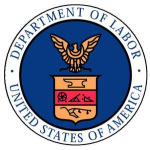- Industry: Government; Labor
- Number of terms: 77176
- Number of blossaries: 0
- Company Profile:
Self correcting feedback and computer electronics. Also, dramatic technological innovation of any sort at the workplace. Often regarded by unions as a cause of unemployment, job alienation, and dislocation.
Industry:Labor
The term originated in 1880 when an Irish landowner, Captain Charles Boycott, was denied all services. Today the expression means collective pressure on employers by refusal to buy their goods or services.
Industry:Labor
Those in private and public employment who engage in manual labor or the skilled trades.
Industry:Labor
A specified group of employees empowered to bargain collectively with their employer.
Industry:Labor
The referral of collective bargaining or grievance disputes to an impartial third party. Usually the arbitrator's decision is final and binding, although there is "advisory arbitration" in which the decision of the arbitrator is taken under advisement by the parties.
Industry:Labor
A post World War I employer movement which stressed freedom of industry to manage its business without union interference.
Industry:Labor
A union security clause whereby all members of a bargaining unit must pay a service fee, the equivalent of dues, whether or not they are union members.
Industry:Labor
Workers who do not have an implicit or explicit contract for long-term employment. BLS uses three alternative measures of contingent workers that vary in scope.
Industry:Labor
An occupation is classified into 1 of 11 categories that best describes the postsecondary education or training needed by most workers to become fully qualified in the occupation. The categories are as follows: first professional degree; doctoral degree; master's degree; bachelor's or higher degree, plus work experience; bachelor's degree; associate degree; postsecondary vocational award; work experience in a related occupation; long-term on-the-job training; moderate-term on-the-job training; and short-term on-the-job training.
Industry:Labor
